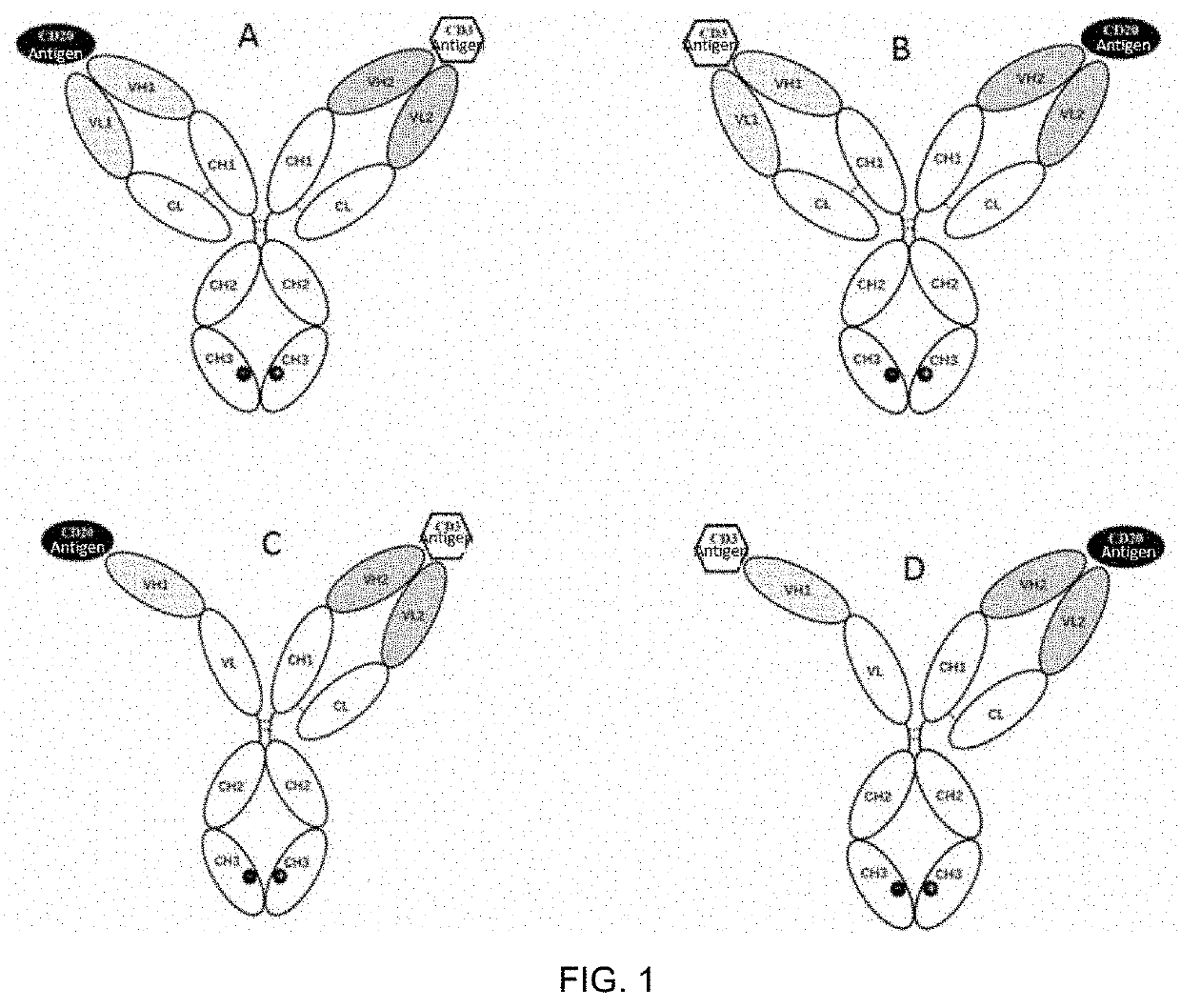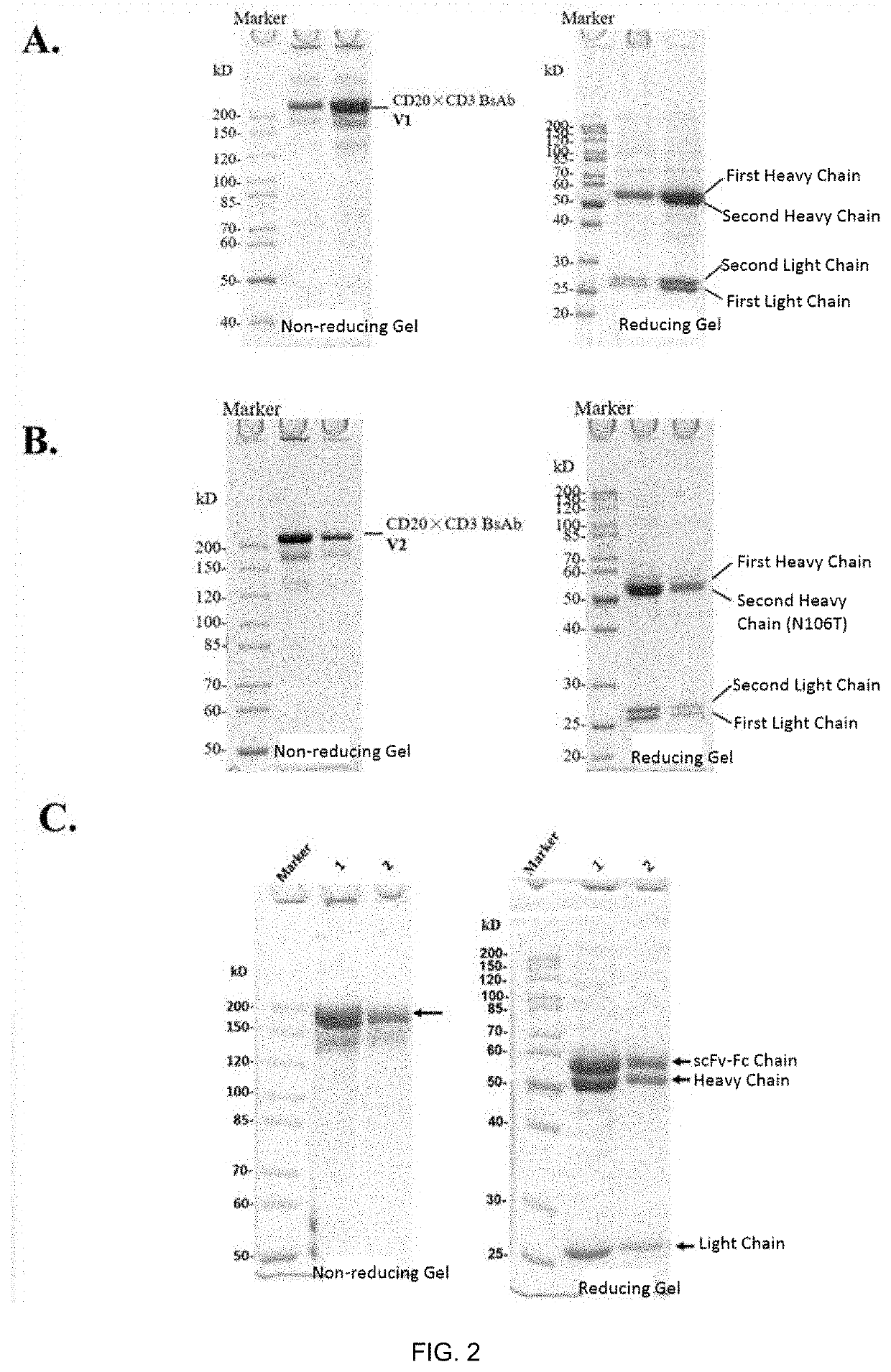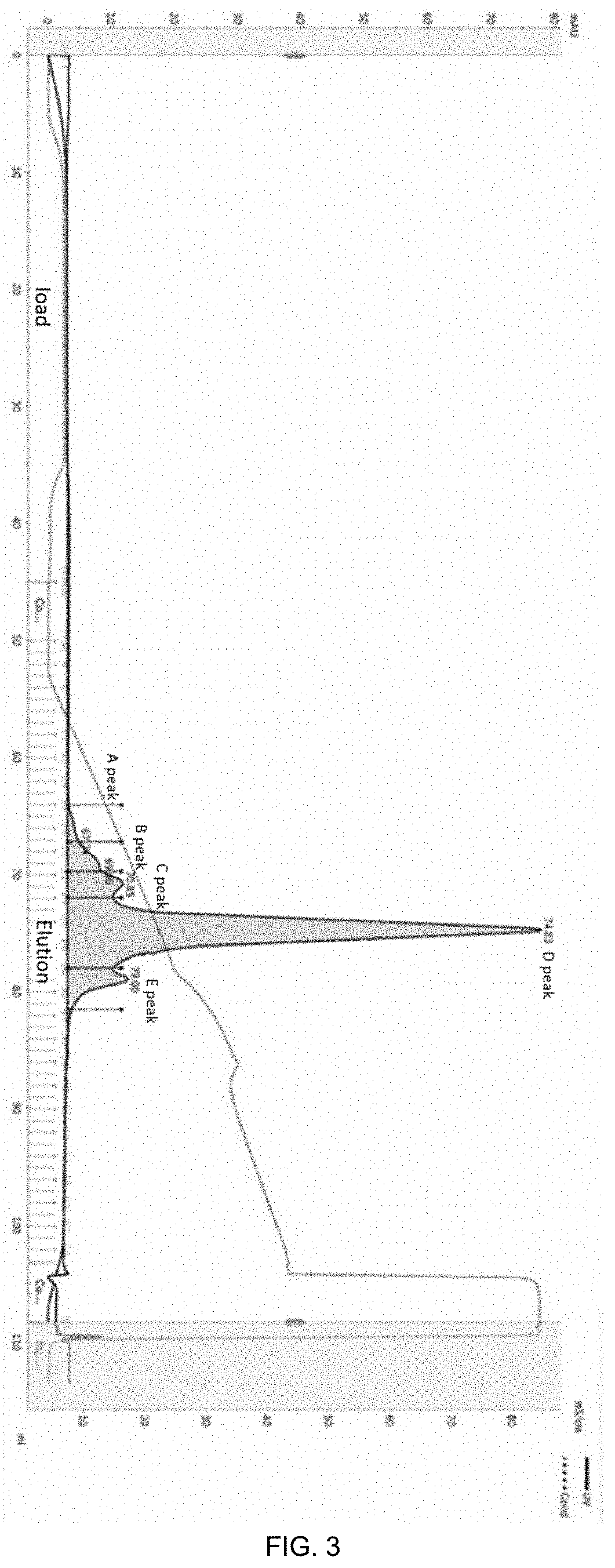Bispecific Antibody, Preparation Method Therefor and Application Thereof
a technology antibodies, which is applied in the field of antibodies and preparation methods therefor, can solve the problems of reducing the overall efficacy of drugs, limiting the therapeutic effect of cd20 monoclonal antibodies, and not all patients can respond to cd20 antibody therapy, so as to facilitate the formation of heavy-chain heterodimers, reduce the effect of fc region function, and similar stability and physical and chemical properties
- Summary
- Abstract
- Description
- Claims
- Application Information
AI Technical Summary
Benefits of technology
Problems solved by technology
Method used
Image
Examples
example 1
[0111](1) Sequence Design of CD20×CD3 BsAb
[0112]The bispecific antibody in an implementation of the present disclosure includes three or four polypeptide chains (FIG. 1), respectively named the first heavy chain (comprising a variable region having an amino acid sequence as set forth in SEQ ID No: 2), the first light chain (comprising a variable region having an amino acid sequence as set forth in SEQ ID No: 4), the second heavy chain (comprising a variable region having an amino acid sequence as set forth in SEQ ID No: 6), the second light chain (comprising a variable region having an amino acid sequence as set forth in SEQ ID No: 10), or a scFv-Fc chain (having an amino acid sequence as set forth in SEQ ID No: 11, SEQ ID No: 12, SEQ ID No: 13, or SEQ ID No: 14; or comprising a variable region having an amino acid sequence as set forth in SEQ ID No: 2, SEQ ID No: 4, SEQ ID No: 6, SEQ ID No: 8, or SEQ ID No: 10), thereby forming an immunoglobulin domain that ...
example 2
Transfection and Expression of Bispecific Antibodies
[0120]An Endo-Free-Plasmid Maxi Kit (100) (purchased from OMEGA, product catalog No. D6926-04) was used for large-scale plasmid extraction, and the operation steps were carried out according to instructions provided in the kit. HEK293 cells were cultured to a cell density of 2.0×106 to 3.0×106 cells / mL. The cell suspension was centrifuged for 5 min at a rotational speed of 1,000 rpm. The old culture supernatant was discarded, and the cells were resuspended using a fresh medium (OPM-291 CD05 Medium, purchased from Shanghai OPM Biosciences Co., Ltd.) to a density of 1.0×106 cells / mL. Co-transfection was performed according to the plasmid combinations provided in Table 1. The transfected cell suspensions were placed in culture shakers with 5% CO2 at 37° C. at 120 rpm for 5 to 7 days for culture in the dark, and supplements were added on the fourth day.
TABLE 1Transient Transfection of CD20 × CD3 BsAbVersion ofCD20 × CD3Expression Plasm...
example 3
ion of Bispecific Antibodies
[0121]Each expression supernatant was collected by centrifugation. The cell supernatant was filtered with a 0.22 μm filter membrane. BsAb proteins were captured from the supernatant with an equilibrated protein A affinity chromatography filler (MabSelect SuRe™, purchased from GE Healthcare company, catalog No. 17-5438-02). Non-specifically bound proteins (about 10 column volumes) were removed with an equilibration buffer (137 mM NaCl, 2.7 mM KCl, 10 mM Na2HPO4, 1.8 mM KH2PO4), and then 5 to 10 column volumes were eluted with an elution buffer (100 mM glycine, pH 3.0 to pH 3.5). The eluate was collected and adjusted to a neutral pH with a neutralization buffer (1 M Tris-HCl, pH 9.0). The eluted proteins were analyzed by SDS-PAGE. FIGS. 2-A and 2-B showed that both V1 and V2 could reach high purity after the four-chain bispecific antibodies were purified with protein A in one step, and reducing electrophoresis showed that the ratio of the two heavy chains a...
PUM
| Property | Measurement | Unit |
|---|---|---|
| Luminescence | aaaaa | aaaaa |
Abstract
Description
Claims
Application Information
 Login to View More
Login to View More - R&D
- Intellectual Property
- Life Sciences
- Materials
- Tech Scout
- Unparalleled Data Quality
- Higher Quality Content
- 60% Fewer Hallucinations
Browse by: Latest US Patents, China's latest patents, Technical Efficacy Thesaurus, Application Domain, Technology Topic, Popular Technical Reports.
© 2025 PatSnap. All rights reserved.Legal|Privacy policy|Modern Slavery Act Transparency Statement|Sitemap|About US| Contact US: help@patsnap.com



